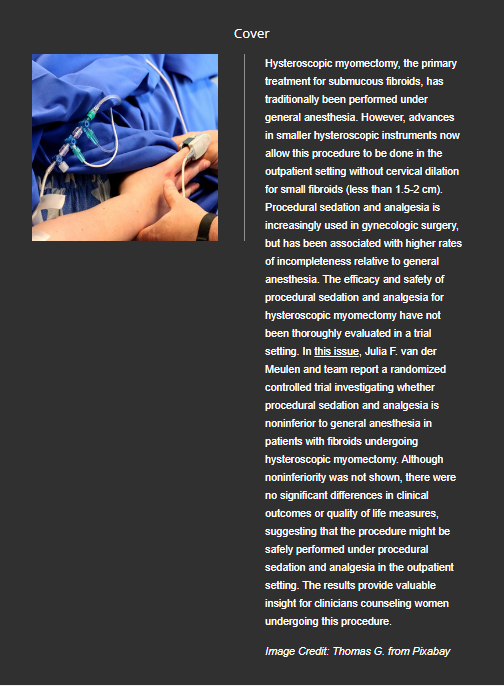Radiation enhancement using focussed ultrasound-stimulated microbubbles for breast cancer: A Phase 1 clinical trial.
IF 15.8
1区 医学
Q1 Medicine
引用次数: 0
Abstract
BACKGROUND Preclinical studies have demonstrated that tumour cell death can be enhanced 10- to 40-fold when radiotherapy is combined with focussed ultrasound-stimulated microbubble (FUS-MB) treatment. The acoustic exposure of microbubbles (intravascular gas microspheres) within the target volume causes bubble cavitation, which induces perturbation of tumour vasculature and activates endothelial cell apoptotic pathways responsible for the ablative effect of stereotactic body radiotherapy. Subsequent irradiation of a microbubble-sensitised tumour causes rapid increased tumour death. The study here presents the mature safety and efficacy outcomes of magnetic resonance (MR)-guided FUS-MB (MRgFUS-MB) treatment, a radioenhancement therapy for breast cancer. METHODS AND FINDINGS This prospective, single-center, single-arm Phase 1 clinical trial included patients with stages I-IV breast cancer with in situ tumours for whom breast or chest wall radiotherapy was deemed adequate by a multidisciplinary team (clinicaltrials.gov identifier: NCT04431674). Patients were excluded if they had contraindications for contrast-enhanced MR or microbubble administration. Patients underwent 2 to 3 MRgFUS-MB treatments throughout radiotherapy. An MR-coupled focussed ultrasound device operating at 800 kHz and 570 kPa peak negative pressure was used to sonicate intravenously administrated microbubbles within the MR-guided target volume. The primary outcome was acute toxicity per Common Terminology Criteria for Adverse Events (CTCAE) v5.0. Secondary outcomes were tumour response at 3 months and local control (LC). A total of 21 female patients presenting with 23 primary breast tumours were enrolled and allocated to intervention between August/2020 and November/2022. Three patients subsequently withdrew consent and, therefore, 18 patients with 20 tumours were included in the safety and LC analyses. Two patients died due to progressive metastatic disease before 3 months following treatment completion and were excluded from the tumour response analysis. The prescribed radiation doses were 20 Gy/5 fractions (40%, n = 8/20), 30 to 35 Gy/5 fractions (35%, n = 7/20), 30 to 40 Gy/10 fractions (15%, n = 3/20), and 66 Gy/33 fractions (10%, n = 2/20). The median follow-up was 9 months (range, 0.3 to 29). Radiation dermatitis was the most common acute toxicity (Grade 1 in 16/20, Grade 2 in 1/20, and Grade 3 in 2/20). One patient developed grade 1 allergic reaction possibly related to microbubbles administration. At 3 months, 18 tumours were evaluated for response: 9 exhibited complete response (50%, n = 9/18), 6 partial response (33%, n = 6/18), 2 stable disease (11%, n = 2/18), and 1 progressive disease (6%, n = 1/18). Further follow-up of responses indicated that the 6-, 12-, and 24-month LC rates were 94% (95% confidence interval [CI] [84%, 100%]), 88% (95% CI [75%, 100%]), and 76% (95% CI [54%, 100%]), respectively. The study's limitations include variable tumour sizes and dose fractionation regimens and the anticipated small sample size typical for a Phase 1 clinical trial. CONCLUSIONS MRgFUS-MB is an innovative radioenhancement therapy associated with a safe profile, potentially promising responses, and durable LC. These results warrant validation in Phase 2 clinical trials. TRIAL REGISTRATION clinicaltrials.gov, identifier NCT04431674.利用聚焦超声刺激微气泡增强乳腺癌的放射治疗:一期临床试验。
背景临床研究表明,放疗与聚焦超声刺激微泡(FUS-MB)治疗相结合,可将肿瘤细胞的死亡率提高 10 到 40 倍。微气泡(血管内气体微球)在靶体积内的声学暴露会导致气泡空化,从而引起肿瘤血管的扰动,激活内皮细胞凋亡通路,从而产生立体定向体放射治疗的烧蚀效应。随后对微气泡敏感的肿瘤进行照射会迅速增加肿瘤的死亡。本研究介绍了磁共振(MR)引导的 FUS-MB (MRgFUS-MB)治疗的成熟安全性和疗效结果,这是一种治疗乳腺癌的放射增强疗法。方法和结果这项前瞻性、单中心、单臂 1 期临床试验纳入了 I-IV 期乳腺癌原位肿瘤患者,多学科团队认为乳腺或胸壁放疗已足够(clinicaltrials.gov identifier:NCT04431674)。如果患者有造影剂增强磁共振或微气泡用药禁忌症,则排除在外。患者在整个放疗过程中接受了 2 到 3 次 MRgFUS-MB 治疗。磁共振耦合聚焦超声设备的工作频率为 800 kHz,峰值负压为 570 kPa,用于在磁共振引导的靶体积内超声注射静脉注射的微泡。根据不良事件通用术语标准(CTCAE)v5.0,主要结果是急性毒性。次要结果是 3 个月时的肿瘤反应和局部控制(LC)。2020年8月至2022年11月期间,共有21名患有23种原发性乳腺肿瘤的女性患者登记并被分配接受干预治疗。三名患者随后撤回了同意书,因此有18名患者的20个肿瘤被纳入安全性和LC分析。两名患者在治疗结束后 3 个月内因转移性疾病进展而死亡,因此未纳入肿瘤反应分析。规定的放射剂量为20 Gy/5次(40%,n=8/20)、30至35 Gy/5次(35%,n=7/20)、30至40 Gy/10次(15%,n=3/20)和66 Gy/33次(10%,n=2/20)。中位随访时间为 9 个月(0.3 至 29 个月)。放射性皮炎是最常见的急性毒性(16/20 例为 1 级,1/20 例为 2 级,2/20 例为 3 级)。一名患者出现 1 级过敏反应,可能与使用微气泡有关。3 个月后,对 18 个肿瘤进行了反应评估:9例完全应答(50%,n=9/18),6例部分应答(33%,n=6/18),2例病情稳定(11%,n=2/18),1例病情进展(6%,n=1/18)。对反应的进一步随访表明,6 个月、12 个月和 24 个月的 LC 率分别为 94%(95% 置信区间 [CI] [84%, 100%] )、88%(95% CI [75%, 100%] )和 76%(95% CI [54%, 100%] )。结论MRgFUS-MB 是一种创新的放射增强疗法,具有安全的特点、潜在的良好反应和持久的 LC。这些结果值得在 2 期临床试验中进行验证。试验注册clinicaltrials.gov,标识符 NCT04431674。
本文章由计算机程序翻译,如有差异,请以英文原文为准。
求助全文
约1分钟内获得全文
求助全文
来源期刊

PLoS Medicine
MEDICINE, GENERAL & INTERNAL-
CiteScore
17.60
自引率
0.60%
发文量
227
审稿时长
4-8 weeks
期刊介绍:
PLOS Medicine is a prominent platform for discussing and researching global health challenges. The journal covers a wide range of topics, including biomedical, environmental, social, and political factors affecting health. It prioritizes articles that contribute to clinical practice, health policy, or a better understanding of pathophysiology, ultimately aiming to improve health outcomes across different settings.
The journal is unwavering in its commitment to uphold the highest ethical standards in medical publishing. This includes actively managing and disclosing any conflicts of interest related to reporting, reviewing, and publishing. PLOS Medicine promotes transparency in the entire review and publication process. The journal also encourages data sharing and encourages the reuse of published work. Additionally, authors retain copyright for their work, and the publication is made accessible through Open Access with no restrictions on availability and dissemination.
PLOS Medicine takes measures to avoid conflicts of interest associated with advertising drugs and medical devices or engaging in the exclusive sale of reprints.
 求助内容:
求助内容: 应助结果提醒方式:
应助结果提醒方式:


